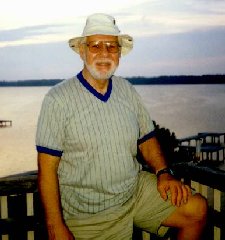11/7/07
A Long And Winding Road
Tri-O's Oddities, observations, and opinions
By Herb Kandel
It was only six months after the Japanese attack on Pearl Harbor. On June 3, 1942 their aircraft struck again at the U.S. Installations at Dutch Harbor in the Aleutian Island Chain. Yes, the same Dutch Harbor from which those vessels launch to catch the Alaskan king crabs (that we see on “The Deadliest Catch”, airing on The Discovery Channel). The Japanese also captured Attu Island and Kiska. Not since the War of 1812 had American territory been occupied by an enemy. It took a year of fierce fighting costing many lives to recapture those territories.
The military had realized the threat of such an invasion through Alaska. For had the Japanese established a base near Anchorage the whole of Alaska would be at peril, “and thus place great pressure upon cities like Seattle, Portland and Vancouver..…..the invasion from Asia was underway” said James A. Michener in his novel “Alaska” .
Three months before the Dutch Harbor attack the U.S. Army had started construction of a road that could transport troops, food, and supplies to tactical points in Alaska. On March 8, 1942 the first shovel was turned into what was to become the Alcan Highway. It was an awesome undertaking. Again, Michener in his description about one of the men involved in the road’s creation writes, “July and August 1942were the closest to hell that he would experience on this earth, for his fifteen-and sixteen hour days were spent in an exhausting routine: drive through that copse of trees in a straight line, flattening evergreens big enough to produce spars for ships, attach wire ropes to stumps and yank them out, push in topsoil from the surrounding areas, level the whole, ride back and forth in the interminable dust to compact the surface, fight mosquitoes all day long and especially at night, to eat lousy food………..[then] finish off four miles before turning in to an exhausted but sometimes sleepless night.”
It took more than 10,000 U.S. Troops in cooperation with Canadian troops and independent contractors to complete this remarkable engineering task. Among those soldiers were four units of the Army's Black Corps of Engineers. They made up over 1/3 of the U.S. Troops but ironically were first considered unfit for these duties because most were from the South and were thought incapable of working in the northern frigid temperatures. When the highway was complete, many were decorated for their efforts and achievements and then transferred to active duty in Europe and the South Pacific. The Army's Black Corps of Engineers were members of the 93rd, 95th, 97th and 388th units.
Eight month and twelve days from that first shovel-full of soil the Alaskan-Canadian (Alcan) Highway was dedicated. This November 21st marks the 65th anniversary of the official dedication. During it’s completion it took the lives of 22 men, and seven airplanes attempting to deliver supplies had crashed. There were numerous and severe injuries for each mile laid. In 1946 the Canadian portion of the highway was transferred to Canada.
It is now spans 1520 miles. Mile 0 is in Dawson Creek, BC, and it leads in a northwesterly direction through Yukon Territory to mile 1520 at Fairbanks, AK. There are 1,190 miles in Canada. It is also connects to the Pan-American Highway system, which means you can drive from Fairbanks to Ushuia (near Cape Horn) at the tip of Argentina. According to Wickipedia “29,800 miles in total length. Except for a 54 MI. Rainforest gap, the road links the mainland nations of the Americas in a connected highway system. According to The Guinness Book of World Records, the Pan-American Highway is the world's longest 'motorable road' "
In June of 1943 the Army Signal Corps completed the radio-telephone line which linked Washington, D.C. To Alaska. It’s 2,000 mile long extension would make it the longest communication system of its kind in the world at that time.
So now we have a long and winding roar that is eligible for Social Security. And just as any senior citizen can attest some days can be creamy smooth while others are rocky road. Almost all of the two-lane highway is surfaced with asphalt but don’t expect to put your cruise control at 65. Some stretches are narrow and curvy missing ample shoulders and at times center lines. Lots of loose gravel can star windshields and “corrugated” areas where “frost heaves” occurred will put a stammer in your speech as you traverse the “washboard”. Sure there can be steep grades, dust, mud, snow, and those darn mosquitoes but with modern vehicles and their comfort accessories the ride is easier. But now it can be considered a “freeway” as compared to what it was when first built. Initially it was a 32 feet wide, singe lane, a muddy twisting trail for trucks and earthmoving equipment built with a single purpose - a lifeline to defend and protect, and that it has.
Happy birthday, Alcan.
http://www.baldwincountynow.com/articles/2007/11/08/columnists/doc4730c954060dd789826904.txt
Subscribe to:
Post Comments (Atom)

No comments:
Post a Comment